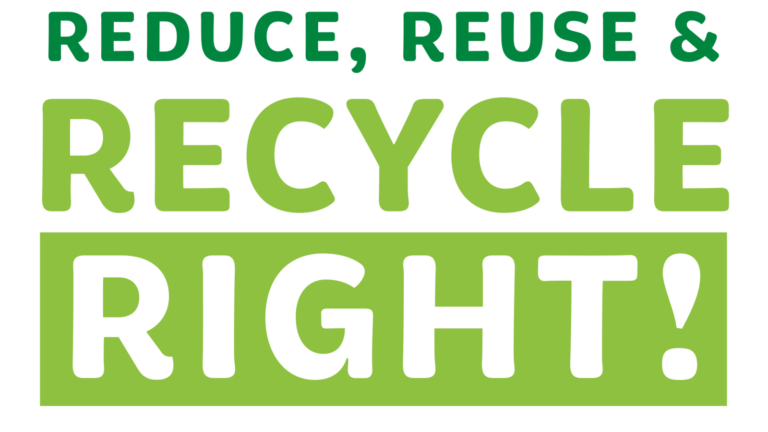If you want to help the environment and save money, cutting down on trash is a good step. Today, “waste reduction” is often used as a catchphrase due to the widespread interest in environmental safeguards. In today’s world, where gadgets and gizmos are increasingly essential parts of our lives, an unprecedented amount of garbage is being generated.
It is impossible to ban all waste-generating materials. An ideal option would be to instead focus on managing and minimizing garbage in our daily lives. In our unique ways, we can all help by cutting down on the trash we produce. Good garbage reduction practices in the workplace have been shown to boost productivity, and employees will appreciate knowing they are making a positive contribution to preserving our natural resources.
Minimizing Business Waste And Recycling
You can lessen the amount of trash that gets hauled off to the landfill by promoting waste diversion strategies like recycling, reusing, and recovering resources within your company. A company can opt for the following measures for waste reduction and going green.
1. Recycle Your Waste

- Determine what materials are suitable for recycling. Segregate the trash. Identify a recycling center in your area and send the segregated material for recycling. It is possible to find the most suitable trash and recycling collection contractors by keeping track of the amount of waste your business generates over time and the types of waste that can be diverted from landfill.
- Firstly determine how much waste the company produces. After compiling all the data, you will know how much trash your company generates monthly, quarterly, annually, etc. Understanding the current company practices of trash management and devising plans is essential.
- The types of recyclables produced by various industries are varied. The method used to collect trash will dictate your company’s recycling and trash disposal procedures. It would help to keep a bin holding enough recyclables for a week’s pickups or negotiate more frequent pickups. For instance, separating paper and cardboard from other recyclables would be necessary if two different collection services were to be used.
2. Cut Down On The Use Of Paper And Printer Ink
- Nearly every industry uses copious amounts of paper and printed materials for routine tasks. Disposable paper stacks by printers, trash cans, and paper shredders are almost expected sights in many workplaces. Lessen the amount of paper and ink in the workplace.
- Access to printers should be restricted in the workplace, so print volumes can be closely monitored. Paper and ink can be wasted if people use printers for personal projects instead of necessary business ones, so tracking how often people use them is essential.
- When running a business, it’s vital to ensure that all printers are set to print on both sides by default or that all employees require double-sided printing. As soon as this adjustment is made, paper consumption can be cut in half.
- Keeping control of paper usage is crucial. Management should keep tabs on how much paper is used in each company division. Businesses should establish contracts with recycling firms to ensure the regular collection of recyclable waste, and recycling should be promoted in the workplace. Companies can save money by using shredded paper as packing material for shipments and mailings.
- To save money on ink, you should avoid printing in color unless necessary. Also, to save money and resources while reducing their metal and plastic waste, businesses can use recycled toner and ink cartridges instead of buying brand-new ones.
- Purchasing policies should be established and followed to ensure that only highly recycled content office paper that does not contain chlorine is purchased by companies. Paper made from more environmentally friendly materials like cotton or hemp could also be considered.
3. Move To E – Data

Any business can benefit from digitizing such information into a database with a backup plan and giving employees need-based access. In the past, companies would keep their most essential records in physical locations like filing cabinets. Now, businesses can keep all of their data in digital databases.
Moving to a centralized database can save your business money and time on paper costs and storage space.
4. Minimizing Manufacturing Waste And Disposal
Manufacturing facilities should modify their procedures and invest in machinery that produces as little waste as possible. Certain types of trash can be recycled and used again in manufacturing. Recycling facilities can be set up to make this happen. Not only can recycling centers help an organization save money, but they can also be a boon to the environment.
5. Use Less Energy As Much As Possible

- Organizations can significantly lessen their environmental impact by switching to more energy-efficient machinery and using natural light best. Office buildings should have many windows and transparent fixtures installed in strategic areas to let in as much natural light as possible.
- Offices can help the environment and save money by setting and sticking to a single temperature policy throughout the building. Reduce heating and cooling costs by raising the temperature a few degrees in the winter and lowering it a few degrees in the summer.
- Prioritize using fluorescent and LED bulbs that are more energy efficient than incandescent bulbs.
- Using energy-efficient appliances such as air conditioners and printers with the Energy Star label can significantly reduce utility bills.
- The savings in energy consumption over time make laptops the more economical option. Companies can buy laptops instead of desktops as laptops are more energy-efficient.
Conclusion
A growing number of today’s businesses have gone completely paperless. Reducing the company’s paper footprint by encouraging employees to switch from paper-based to electronic communication and other non-print media is highly beneficial. Businesses can do a great deal with as little as a slight decrease in overall energy consumption and adopt more energy-efficient workplace technology. Hence be wise and responsible in adopting ways to reduce business waste and benefit the environment.

